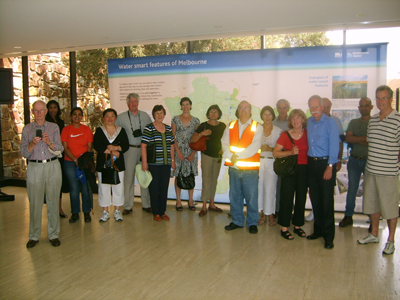
On Friday November 18th, approximately 20 members, partners and friends of the Club undertook a vocational visit to the Western Treatment Plant at Werribee.
Run by Melbourne Water, the Western Treatment Plant treats about 60% of Melbourne's sewage, (about 160 billion litres a year). It serves about 1.6 million people in the central, northern and western suburbs.
The plant has evolved from a low tech land and pasture based treatment system to a highly sophisticated operation. At the same time. automation and contracting out has meant that only 6 staff are required to now operate the plant compared to the hundreds of earlier decades.
Melbourne has two important pieces of infrastructure put in place in the 19th century and still crucial today – our system of closed catchments for water supply in the mountains to its east and the sewerage system. The Western Treatment plant’s origins can be traced back to 1888 when a Royal Commission into Melbourne's public health led to a proposal for the development of a sewage farm to treat Melbourne’s waste. Previously, Melbourne's sewage was collected in open drains and discharged into the Yarra River and Hobsons Bay.
A major upgrade of the plant (completed in 2005) has significantly reduced the amount of nitrogen in the treated effluent that is discharged to Port Phillip Bay and significantly increased the amount of high quality recycled water available. It has also improved the ability to capture biogas to generate electricity, markedly reducing greenhouse gas and odour emissions in the process. The tour group saw new works to enhance this system.
The plant is about 10,500 hectares in area and supports a thriving agricultural enterprise using recycled water from the plant. A large part of the area is now managed for conservation purposes – it is a haven for tens of thousands of birds many of whom migrate each year from the northern hemisphere – from as far away as Siberia. The plant is regarded as an internationally significant wetland.
The tour was able to see at first hand the range of bird life, including large groups of Pelicans as well as experiencing a spectacular lightning show from across Corio Bay and the You Yangs.
The visit was organized for the Vocational Committee by Frank O’Brien who was given a vote of thanks from all those attending for putting together a great day which enabled us to see parts of the plant not usually available to the public.
